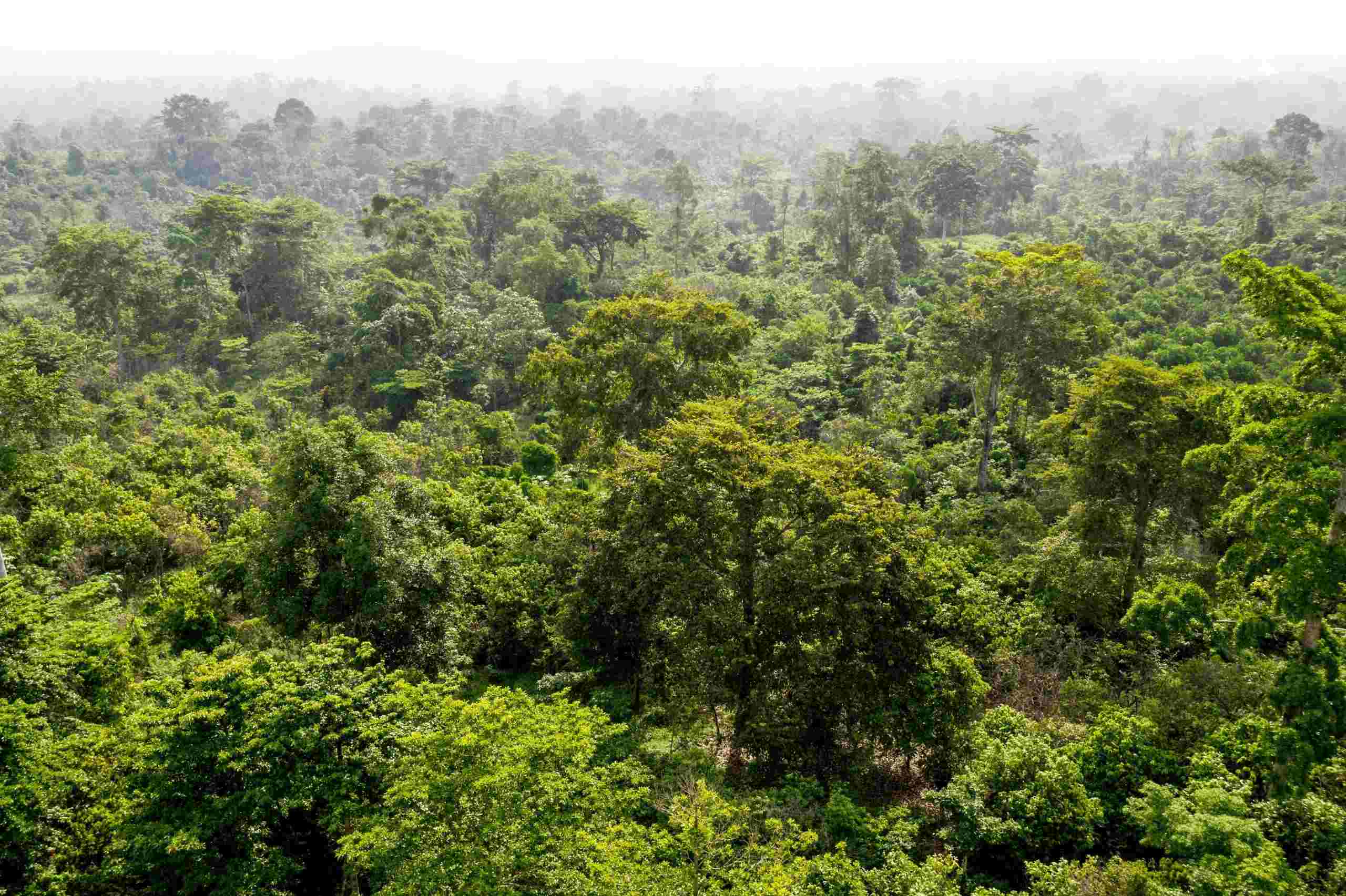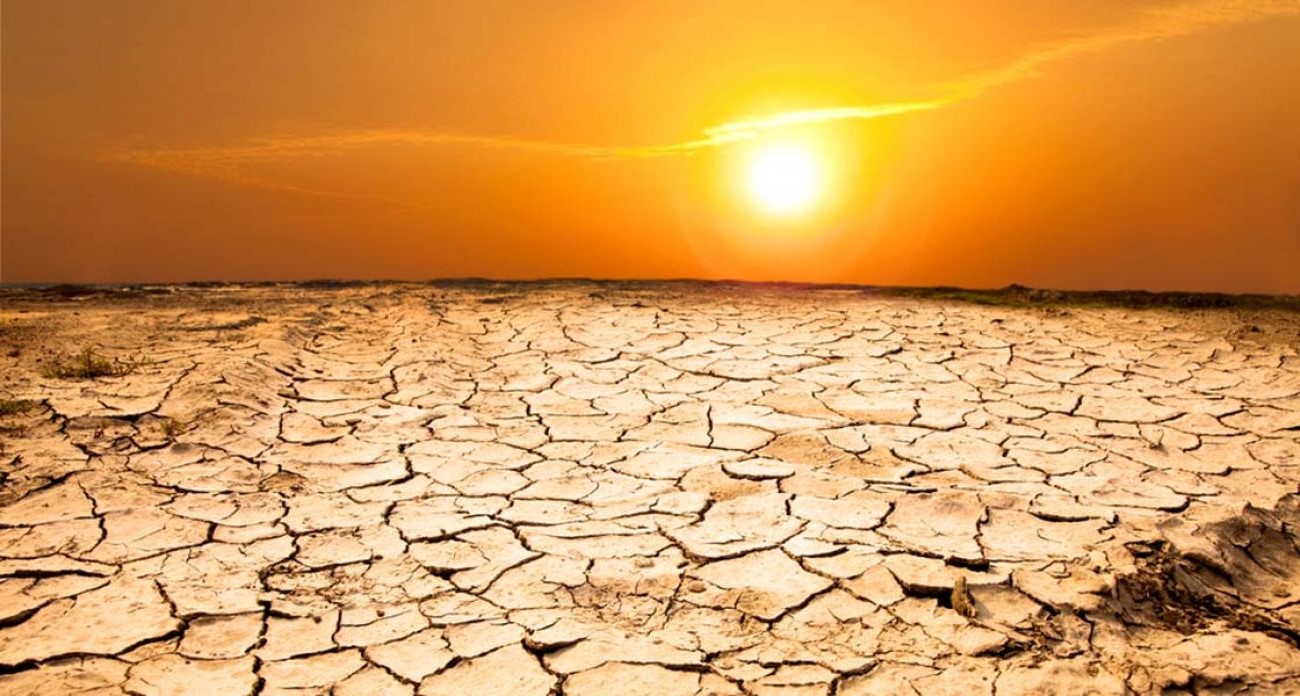Home>Weather and Climate>Understanding The Climate In Texas


Weather and Climate
Understanding The Climate In Texas
Published: March 1, 2024
Gain insights into the weather and climate of Texas with our comprehensive guide. Understand the unique climate patterns and conditions in the Lone Star State.
(Many of the links in this article redirect to a specific reviewed product. Your purchase of these products through affiliate links helps to generate commission for Temperatures.com, at no extra cost. Learn more)
Table of Contents
Introduction
Texas, the second-largest state in the United States, is renowned for its diverse landscapes, rich history, and unique culture. From the sprawling deserts of the west to the lush piney woods of the east, Texas encompasses a wide range of climates and weather patterns. Understanding the climate of Texas is crucial for residents, policymakers, and businesses, as it directly impacts various aspects of daily life, agriculture, and the economy.
The state's climate is influenced by a myriad of factors, including its size, topography, and proximity to the Gulf of Mexico. Texas experiences a wide range of weather phenomena, from scorching summers to mild winters, and from devastating hurricanes to severe droughts. The dynamic nature of Texas' climate makes it a fascinating subject for exploration and study.
In this comprehensive guide, we will delve into the geography of Texas and its impact on the state's climate. We will also explore the various climate zones within Texas, each with its own distinct characteristics and challenges. Furthermore, we will examine the effects of climate change on Texas, as well as the state's vulnerability to extreme weather events.
By gaining a deeper understanding of the climate in Texas, we can appreciate the intricate relationship between the environment and the state's agriculture and economy. Additionally, we will look towards the future and consider the potential implications of climate change on Texas, as well as the measures being taken to mitigate its impact.
Join us on this enlightening journey as we unravel the complexities of the climate in Texas and gain valuable insights into the forces that shape this remarkable state.
The Geography of Texas
Stretching across approximately 268,596 square miles, Texas is a vast and diverse state characterized by a varied topography that significantly influences its climate. The state is bordered by four U.S. states—Oklahoma, Arkansas, Louisiana, and New Mexico—and shares an extensive international border with Mexico. Its expansive size encompasses a wide range of geographical features, from coastal plains and rolling hills to rugged mountains and expansive deserts.
The eastern region of Texas is dominated by the Gulf Coastal Plains, a low-lying area that extends inland from the Gulf of Mexico. This region is characterized by fertile soils, abundant rainfall, and a humid subtropical climate, making it conducive to agriculture and supporting diverse ecosystems. Moving westward, the terrain transitions into the vast expanse of the Great Plains, where flat prairies and rolling plains dominate the landscape. This area experiences a semi-arid climate, with lower annual precipitation compared to the eastern parts of the state.
The central region of Texas is marked by the iconic Hill Country, a picturesque area adorned with rolling hills, limestone cliffs, and clear-water rivers. This region boasts a unique microclimate, with slightly cooler temperatures and higher rainfall compared to the surrounding areas. As we venture further west, the landscape transforms into the rugged terrain of the Trans-Pecos region, encompassing the majestic Davis Mountains and the arid Chihuahuan Desert. This area experiences extreme temperature variations and receives minimal rainfall, contributing to its desert climate.
To the south, the Rio Grande Valley forms a natural border between Texas and Mexico, characterized by fertile agricultural lands and a subtropical climate. The proximity to the Gulf of Mexico influences the climate of this region, resulting in warm temperatures and occasional tropical storms. Finally, the northern part of Texas is defined by the expansive Panhandle, an area known for its flat plains and relatively low precipitation, creating a semi-arid climate.
The diverse geography of Texas, from its coastal plains and rolling hills to its rugged mountains and expansive deserts, plays a pivotal role in shaping the state's climate. This intricate interplay between geographical features and climate patterns contributes to the unique and varied environmental conditions experienced across the Lone Star State.
The Climate Zones in Texas
Texas encompasses a remarkable diversity of climate zones, each characterized by distinct weather patterns, temperature ranges, and precipitation levels. These climate zones play a pivotal role in shaping the state's ecosystems, agricultural practices, and overall way of life. Understanding the nuances of these climate zones is essential for comprehending the environmental dynamics within the state.
The Gulf Coastal Plains, situated in the eastern part of Texas, experience a humid subtropical climate. This region is known for its hot, humid summers and mild winters, with ample rainfall throughout the year. The fertile soils and abundant precipitation support lush vegetation, making it an ideal environment for agriculture and diverse wildlife.
Moving westward, the Great Plains region exhibits a semi-arid climate, characterized by lower annual precipitation and a wider temperature range. This area is prone to droughts and experiences hot summers and relatively mild winters. The semi-arid climate presents challenges for agriculture and water management, requiring innovative strategies to sustainably utilize the limited water resources.
The Hill Country, nestled in central Texas, boasts a unique microclimate distinguished by slightly cooler temperatures and higher rainfall compared to the surrounding areas. This region's diverse topography, including rolling hills and clear-water rivers, contributes to its distinct climate, supporting a rich array of flora and fauna.
Venturing further west, the Trans-Pecos region encompasses the Chihuahuan Desert, known for its arid climate and extreme temperature variations. This desert region receives minimal rainfall and experiences scorching summers and chilly winters. The harsh environmental conditions present challenges for both agriculture and human habitation, necessitating adaptive measures to thrive in this arid landscape.
The Rio Grande Valley, located in the southern part of Texas, benefits from a subtropical climate influenced by its proximity to the Gulf of Mexico. This region experiences warm temperatures and occasional tropical storms, fostering a unique agricultural landscape and diverse ecosystems.
In the northern part of Texas, the Panhandle region exhibits a semi-arid climate with relatively low precipitation and a wide temperature range. This area's flat plains and limited rainfall pose challenges for agriculture and water conservation, requiring innovative approaches to sustain the local ecosystem.
The intricate tapestry of climate zones in Texas reflects the state's diverse geography and contributes to the rich tapestry of ecosystems and environmental conditions found across the Lone Star State. Understanding these climate zones is crucial for adapting to the challenges and opportunities presented by Texas' varied environmental landscapes.
The Impact of Climate Change in Texas
Climate change has emerged as a pressing concern for Texas, with far-reaching implications for the state's environment, economy, and communities. The effects of climate change are increasingly evident, posing significant challenges and necessitating proactive measures to mitigate its impact.
One of the most notable impacts of climate change in Texas is the intensification of extreme weather events. Rising global temperatures have contributed to an increase in the frequency and severity of hurricanes, heatwaves, and droughts. Coastal regions, including the Gulf Coastal Plains and the Rio Grande Valley, are particularly vulnerable to the devastating effects of stronger hurricanes and storm surges, leading to widespread damage to infrastructure and disruptions to communities.
Furthermore, the agricultural sector in Texas faces mounting challenges due to climate change. Shifts in precipitation patterns and prolonged periods of drought pose significant risks to crop yields and livestock production. Farmers and ranchers across the state are grappling with the need to adapt to changing climatic conditions, implement water-efficient practices, and explore resilient crop varieties to sustain agricultural productivity in the face of evolving environmental challenges.
The implications of climate change extend beyond environmental concerns, impacting public health and urban infrastructure. Rising temperatures and prolonged heatwaves pose health risks, particularly for vulnerable populations, while urban areas contend with the strain on energy resources and heightened demand for cooling systems. Additionally, the state's water resources are under increasing pressure, necessitating innovative water management strategies to ensure a sustainable supply for both urban and rural communities.
The economic ramifications of climate change are also significant, with implications for industries such as energy, tourism, and insurance. The energy sector, vital to Texas' economy, faces challenges related to the increased demand for cooling during hotter summers and the potential impact on energy infrastructure from extreme weather events. Similarly, the tourism industry, particularly in coastal areas, must adapt to changing environmental conditions and the potential risks associated with sea-level rise and coastal erosion. Additionally, the insurance sector grapples with the escalating costs of insuring properties in high-risk areas prone to climate-related disasters.
In response to these challenges, Texas is actively pursuing initiatives to address the impact of climate change. Efforts to enhance resilience, promote sustainable practices, and invest in renewable energy sources are underway, reflecting a proactive approach to mitigating the effects of climate change and safeguarding the state's future.
The impact of climate change in Texas underscores the urgency of adopting adaptive strategies, fostering resilience, and prioritizing sustainable practices to mitigate the far-reaching effects of a changing climate. By acknowledging these challenges and embracing innovative solutions, Texas can navigate the complexities of climate change while fostering a sustainable and resilient future for its communities and ecosystems.
Weather Patterns and Extremes
Texas is renowned for its diverse and often unpredictable weather patterns, ranging from scorching heatwaves to severe thunderstorms and occasional winter freezes. The state's expansive size and varied topography contribute to a wide array of climatic conditions, resulting in a dynamic and ever-changing weather landscape.
During the summer months, Texas experiences sweltering heat, with temperatures frequently soaring above 100 degrees Fahrenheit in many regions. The combination of high temperatures and humidity can create oppressive conditions, particularly in the eastern Gulf Coastal Plains and the southern Rio Grande Valley. These hot and humid summers pose challenges for outdoor activities and agricultural practices, necessitating measures to mitigate heat-related risks.
In contrast, the winter season brings a diverse set of weather extremes to Texas. While the southern regions typically enjoy milder winters, areas in the northern Panhandle may encounter freezing temperatures and occasional snowfall. The state's susceptibility to winter freezes can impact agriculture, infrastructure, and transportation, requiring preparedness and adaptive measures to minimize disruptions.
Texas is also prone to severe weather events, including thunderstorms, tornadoes, and flash floods. The spring months often witness the arrival of powerful thunderstorms, accompanied by intense lightning, strong winds, and torrential rainfall. These storms can lead to flash floods, posing risks to communities and infrastructure. Additionally, the state's Tornado Alley, located in the northern and central regions, experiences a heightened risk of tornado activity, necessitating vigilant monitoring and preparedness to ensure public safety.
Hurricanes and tropical storms present significant weather challenges for coastal areas, particularly along the Gulf of Mexico. Texas' vulnerability to these powerful storms has been demonstrated by past events, such as Hurricane Harvey, which caused widespread devastation and flooding. The impact of hurricanes underscores the importance of robust disaster preparedness, infrastructure resilience, and community readiness to mitigate the effects of these extreme weather phenomena.
The dynamic weather patterns and extremes in Texas underscore the need for proactive measures to address the diverse challenges posed by the state's climate. By understanding and preparing for these weather phenomena, Texas can enhance its resilience and ensure the well-being of its residents and communities in the face of ever-changing weather dynamics.
How Climate Affects Agriculture and Economy
The climate exerts a profound influence on the agriculture and economy of Texas, shaping the state's agricultural practices, productivity, and economic resilience. The diverse climate zones within Texas, ranging from humid subtropical regions to arid desert landscapes, present both opportunities and challenges for the agricultural sector. Understanding the intricate relationship between climate and agriculture is essential for navigating the complexities of environmental variability and fostering sustainable economic growth.
In the humid subtropical Gulf Coastal Plains, the abundant rainfall and fertile soils support a diverse range of crops, including rice, cotton, and citrus fruits. The region's favorable climate enables year-round cultivation and contributes significantly to Texas' agricultural output. Conversely, the semi-arid climate of the Great Plains presents challenges for agriculture, requiring innovative water management strategies and drought-resistant crop varieties to sustain productivity in the face of limited precipitation.
The impact of climate on agriculture extends beyond crop cultivation to livestock production, with varying climatic conditions influencing the viability of ranching practices across different regions of Texas. The availability of water resources, temperature fluctuations, and the prevalence of drought conditions directly affect the well-being of livestock and the sustainability of ranching operations, highlighting the need for adaptive measures to mitigate the impact of climatic variability.
Furthermore, the interplay between climate and agriculture reverberates throughout the state's economy, shaping the livelihoods of farmers, ranchers, and agricultural workers. The agricultural sector serves as a cornerstone of Texas' economy, contributing significantly to the state's GDP and employment opportunities. The resilience of this sector in the face of climatic challenges is pivotal for ensuring food security, economic stability, and rural development.
In addition to agriculture, the broader economy of Texas is intricately linked to the state's climate, with weather patterns and environmental conditions influencing various industries and economic activities. The energy sector, vital to Texas' economy, faces implications from climate-related factors, including increased demand for cooling during hotter summers and the potential impact on energy infrastructure from extreme weather events. Similarly, the tourism industry, particularly in coastal areas, must adapt to changing environmental conditions and the potential risks associated with sea-level rise and coastal erosion.
By recognizing the multifaceted impact of climate on agriculture and the economy, Texas can proactively implement strategies to enhance resilience, promote sustainable practices, and foster innovation within key industries. Embracing climate-resilient agricultural practices, investing in renewable energy sources, and prioritizing adaptive measures can fortify the state's economic foundation and ensure the well-being of its communities in the face of evolving climatic conditions.
The Future of Texas Climate
The future of Texas climate presents a landscape shaped by both challenges and opportunities, influenced by the ongoing impact of climate change and the imperative for proactive adaptation. As global temperatures continue to rise, Texas is poised to experience amplified effects, necessitating a strategic approach to mitigate risks and foster resilience.
One of the defining factors shaping the future of Texas climate is the escalating frequency and intensity of extreme weather events. The state's vulnerability to hurricanes, heatwaves, and droughts underscores the urgency of bolstering infrastructure resilience, implementing robust disaster preparedness measures, and enhancing community readiness. By prioritizing adaptive strategies and investing in climate-resilient infrastructure, Texas can mitigate the potential impact of these weather extremes and safeguard the well-being of its residents.
Furthermore, the agricultural sector in Texas faces the imperative of adapting to evolving climatic conditions. Shifts in precipitation patterns, prolonged periods of drought, and the increasing prevalence of extreme heat pose challenges for crop cultivation and livestock production. Embracing sustainable agricultural practices, promoting water-efficient strategies, and exploring resilient crop varieties are essential for ensuring the long-term viability of the state's agricultural industry. By fostering innovation and resilience within the agricultural sector, Texas can sustainably navigate the complexities of a changing climate while ensuring food security and economic stability.
The future of Texas climate also presents opportunities for advancing renewable energy initiatives and promoting sustainable practices. Texas, renowned for its vast wind and solar resources, is well-positioned to expand its renewable energy capacity, reduce carbon emissions, and mitigate the impact of climate change. By prioritizing investments in clean energy infrastructure, fostering technological innovation, and embracing sustainable development practices, Texas can emerge as a leader in the transition towards a low-carbon economy, contributing to global efforts to combat climate change.
In addition, the future of Texas climate underscores the importance of fostering environmental stewardship and promoting community resilience. By prioritizing conservation efforts, enhancing natural resource management, and empowering communities to adapt to changing environmental conditions, Texas can cultivate a sustainable and vibrant future for its diverse ecosystems and inhabitants.
As Texas navigates the complexities of a changing climate, proactive measures, innovation, and collaborative efforts are pivotal for shaping a resilient and sustainable future. By embracing adaptive strategies, prioritizing environmental sustainability, and fostering resilience across communities and industries, Texas can navigate the challenges and opportunities presented by the evolving climate landscape, ensuring a prosperous and sustainable future for generations to come.














